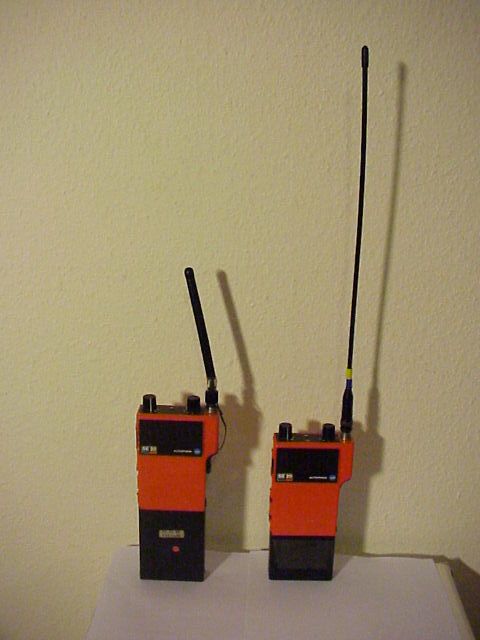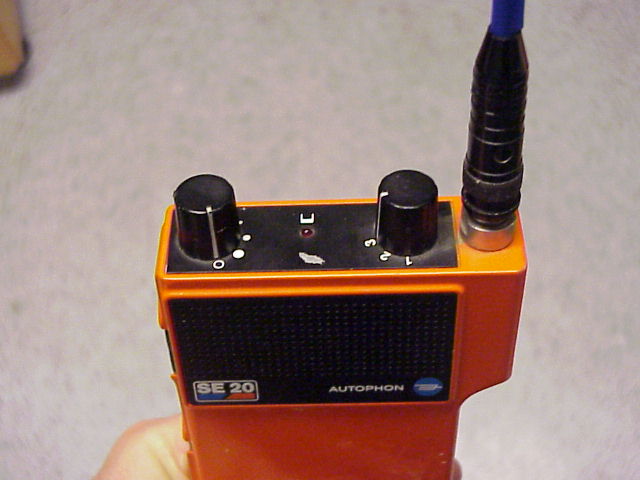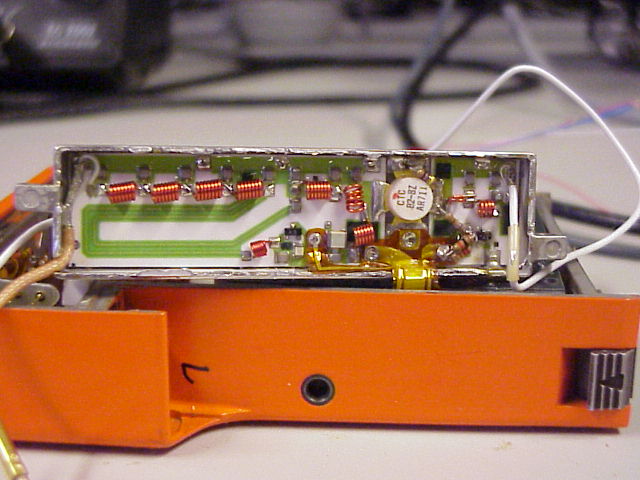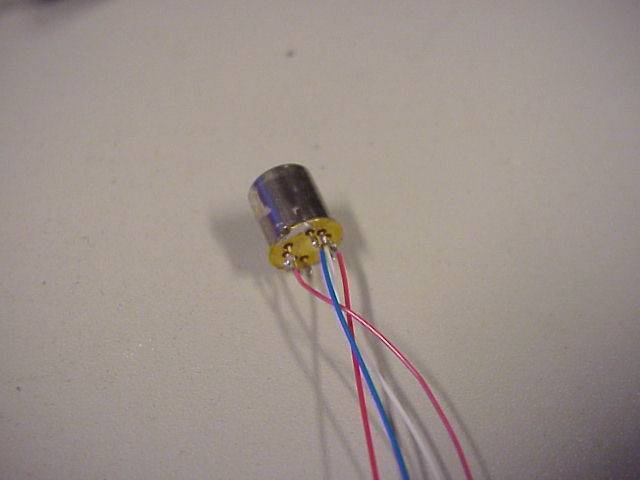This is a famous radio (at least in Switzerland), because it was very used by the polices, rescue services, firemens,... The basic version has 3 Channels. I saw them working on VHF and UHF professional bands. I got the opportunity to buy 2 of them at the biggest Swiss Surplus Party in Zofingen.

The the transceiver exists in different versions. On this picture you can see at least two accumulators and two antennas. Both are working on VHF.
The working frequency is defined by a quartz. In my case (but it may not be the case for all versions), the carrier frequency is calculated as follow:
Frf=(2*Fquartz)+21.4 MHzThese are 3rd Overtone Crystals, which I ordered from TELCONA, with a serial resistance of less than 25 Ohms and they worked well.
But if your version is ready for working via a repeater, you may need to change the whole modulator block.

The front (top) panel is very very very simple. The ON/OFF and volume is controlled by the button on the left. Position 0 is OFF,
and a big "dot" corresponds to a high audio volume.
The most conterclockwise position is marked S(not visible on the picture) and corresponds to an open squelch position. (With fixed, maximum audio level).
The 3 channels are selected by turning the button on the right.

This is a view inside the transceiver. You can see the modular construction. The two metal cans with the white stickers contains the three crystals. One block (marked DG03) contains the oscillator, plus the cristal for Channel 1. The other block (DE01) contains the two quartz for channel 2 and 3.
The Power Amplifier has been opened, because I suspected that it was out of order. But that wasn't the case.

Here is a detailed view of the PA. I had to unsolder the lid, for checking that the PA was working well! So I took the foto, not to have done all this job for nothing...

The guilty element was in fact the antenna switch. This is a Teledyne relay, and the TX path was out of order. Accessing the relay wasn't easy, as it was deeply dug inside the aluminium case of the transceiver. I had to dismount the connector for the headset and the antenna connexion, in order to remove the board where the relay was soldered...
Thanks to an amateur radio friend, I could get a new relay, and replace it. Hamspirit is still living... Great!

The picture above shows the place where the relay is. It's deeply burried under an antenna connector and a headset connector. You have to dismount the headset connector, unsolder the antenna connector and unplug the flexible circuit, in order to remove the printed circuit board where the relay is soldered. Only then you can change the 8 pin relay, and do the whole work backward
Finally, these are the measurement I got from the two units:| Parameter | Value for Radio A | Value for Radio B | unit |
| TX | |||
| Supply Current @8V | 678 | 670 | mA |
| RF Power | 1 | 1 | W |
| Harmonic 3 level | -49 | -48 | dBm |
| Harmonic 2 level | -56 | -62 | dBm |
| RX (Fmod=1kHz;Deviation=3kHz) | |||
| Supply current (@8V) | 23 | 23 | mA |
| Squelch opens at | -118 | -118 | dBm |
| Minimum dicernable audio (noise floor) | -125 | -125 | dBm |
Back to home page